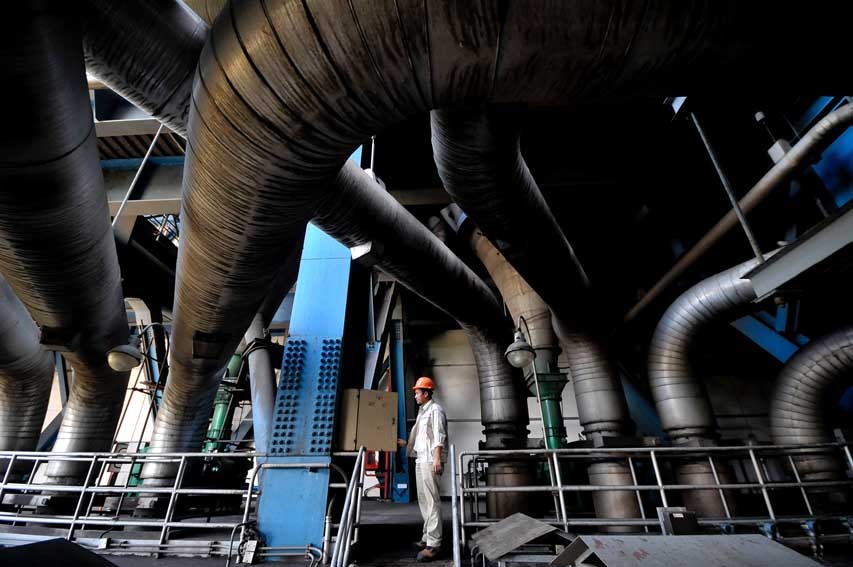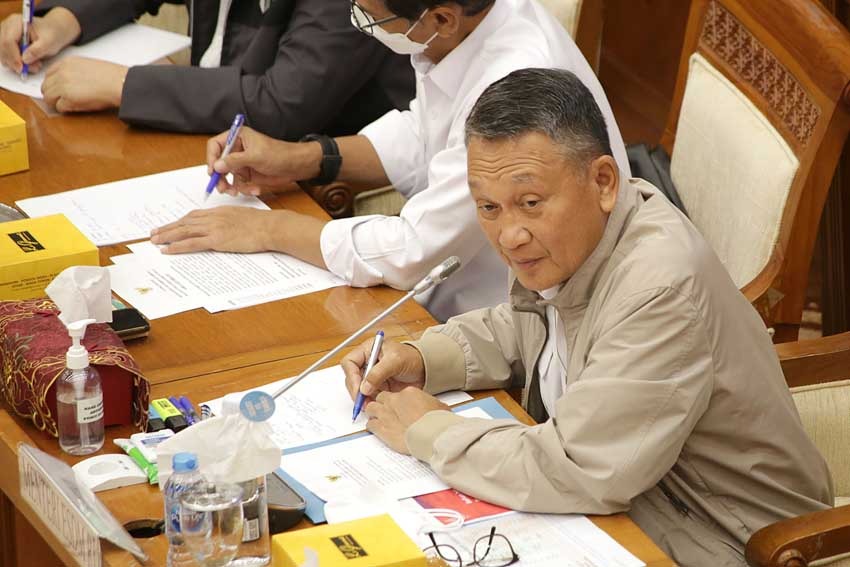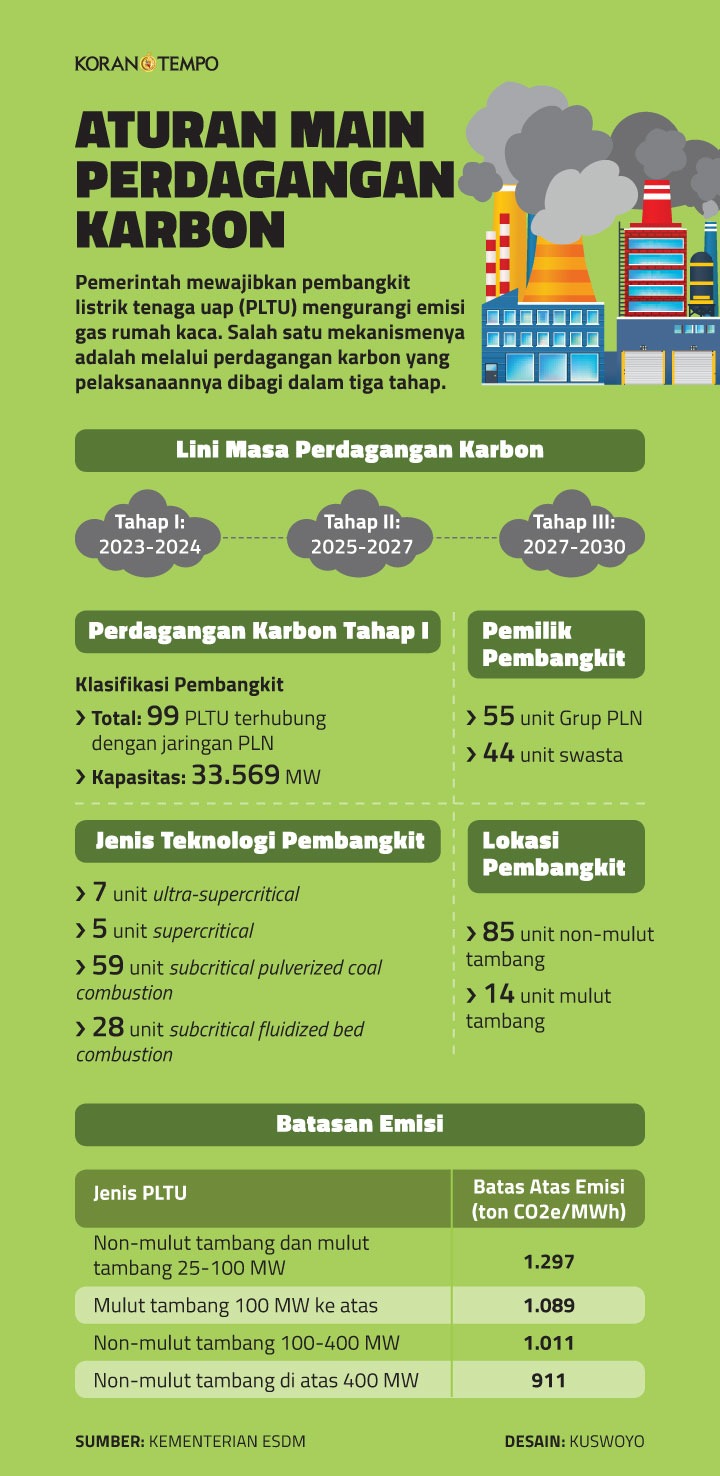JAKARTA – The government started carbon trading activities specifically for coal-fired power plants (PLTU) and required 99 PLTUs owned by 42 companies to participate in the program. These plants supply electricity to the PT PLN (Persero) network with a total installed capacity of 33,569 megawatts.
Director General of Electricity of the Ministry of Energy and Mineral Resources, Jisman Hutajulu, said the inauguration of the carbon trading program was marked by the completion of the determination of the value of the Technical Approval of the Upper Limit of Emissions of Business Actors (PTBAE-PU).
The essence of the policy is that the government determines the maximum amount of greenhouse gas emissions each power plant can produce. The power plant will be called the experience an emission deficit if it exceeds the limit and experiences a surplus if it manages to keep emissions below the threshold.
From the calculation of the emission limit, Jisman added, there are 10.2 million tons of emission surpluses and 9.7 million tons of emission deficits contained in PLTU operational activities. “So, there is a potential of around 500 thousand tons of CO2e (carbon dioxide equivalent) that participants can trade this year,” he said yesterday.

Only Valid Among Participants
The Ministry of Energy’s Director of Electricity Engineering and Environment, M.P. Dwinugroho, stated that carbon trading transactions are only valid between participants. They cannot buy from or sell to parties other than the 99 registered power plants. “Companies are also prohibited from trading carbon with plants owned by the same entity,” he said.
The government leaves the determination to the market mechanism regarding the carbon price. Participants are welcome to negotiate to determine the appropriate value. The Energy Ministry estimates the carbon price will be US$ 2-18 per ton of CO2e. “In the international market, it could be US$ 2-99 per ton of CO2e.”
If by the end of the year, only some of the surplus is absorbed, he said, companies can trade it for a maximum of two years from the end of the carbon trading period. Meanwhile, if there is a shortage in the carbon market, the government can increase the availability of PTBAE-PU and offer it through auction. Revenue from the transaction will be used to finance activities aimed at reducing greenhouse gas emissions, developing new and renewable energy, energy efficiency, and mitigating emissions.
In addition to direct trading, the government opens offset options from renewable energy power plants or other activities in the low-emission energy sector. The condition is that they have obtained a Greenhouse Gas Emission Reduction Certificate from the Ministry of Environment and Forestry. However, Nugroho said that the certificate owners are still limited.

Sanctions Threatened
Businesses that conduct carbon trading must report to the government through Apple-Gatrik, a tool created by the Ministry of Energy to calculate and report greenhouse gas emissions from power plants. The report will be validated and verified by an independent agency. If a business participates in carbon trading without reporting, the carbon trading transaction that has been carried out will not be considered.
Meanwhile, the Ministry will send a warning letter to companies not participating in carbon trading after receiving PTBAE-PU. “In addition, they will be given a lower cap allocation (upper limit of greenhouse gas emission expenditure) to make it more stringent,” Nugroho said.
Minister of Energy and Mineral Resources Arifin Tasrif said carbon trading this year is just the beginning. The government will involve more power plants to participate. “In the future, carbon trading will be gradually applied to fossil power plants other than coal-fired,” he said. In addition, plants outside the PLN network and plants for self-interested electricity supply businesses will be targeted.
He hopes this carbon trading scheme can encourage businesses to be more aggressive in reducing emissions. About 60 percent of domestic power plants use coal, so this sector contributes about 40 percent of the total emissions produced by Indonesia.
Indonesia is pursuing ambitious emission reduction targets. In the Nationally Determined Contribution, Indonesia has committed to reducing energy sector emissions by 369 million tons of CO2 by 2030. In addition, the government aims to be carbon neutral by 2060. These targets to become a clean energy user even bring financing through the Just Energy Transition Partnership scheme worth US$ 20 billion.
The National Coordinator of Publish What You Pay, Aryanto Nugroho, called the carbon trading policy a step forward to provide initiatives for emission reduction, especially from the energy sector. However, this program needs to be aligned with other emission reduction plans, such as the early retirement of PLTU. “Don’t let this policy become a long-term solution and be used to postpone the plan for early retirement of PLTU,” he said.
Executive Director of the Indonesia Center for Renewable Energy Studies, Paul Butarbutar, also said that Indonesia had taken a step forward to achieve the NDC target through mandatory carbon trading for power plants. He hopes that throughout this year and 2024, the government will take lessons from its implementation while preparing to expand trading to other sectors. “One of the things that need to be considered in the future is how to treat power plants that are retired with this carbon trading policy,” he said.
Source: Tempo
